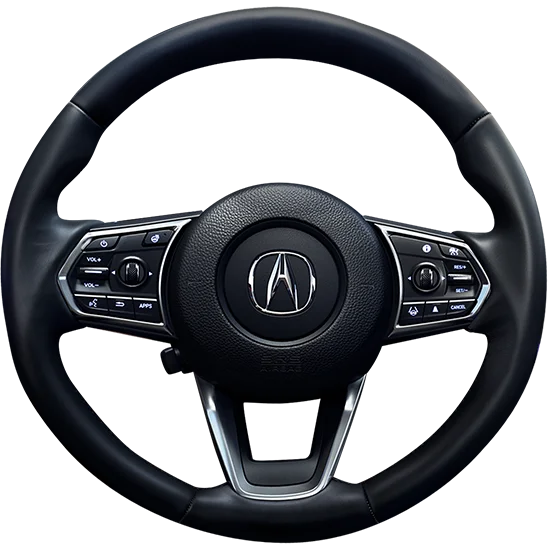Bill Yex & John Frye
Model Behavior
Digital and physical car modelers can sometimes be the bearers of bad news for a designer. They may present them with the feasible reality of an ideal sketch. But in the intimate environment of the Acura Design Studio, designers and modelers couldn’t be more collaborative.
And for the next-generation Sport Hybrid NSX, collaborating between disciplines couldn’t be more important. Acura is not looking to be a business-as-usual kind of company. And Bill Yex and John Frye are exponentially more than typical design guys.
Yex is Chief Modeler for Acura, working with teams to help them create mostly clay models from designer direction and through a process of feedback between sketches, the clay model and digital models. Frye is Digital Modeling Group Leader, translating a designer’s concepts into a 3D computer model.
Their roles in realizing the highly anticipated NSX as a production-ready Sport Hybrid supercar were, well, super integral. As key players on the team, they acted as skillful artists, bridging design ideals with reality.
“The sketch is always, it’s like the dream - it shouldn’t be 100% possible with available technology, the day a designer draws it. The sketch challenges us to innovate and to find ways to make it happen. With this car, there was such a strong push for it to truly be next-generation. There was so much engineering innovation at play that we were able to accomplish the proportions and the vision of the sketches. This made it really fun to work on,” Yex explains.
From their perspective, it truly was fun working things out along the way. Good thing, because it was quite a ride.
Consider the history. The original NSX went on the market in 1991and instantly resonated with enthusiasts and the auto industry as a whole. It stayed in production for 15 years. In 2007, buzz went around about a new NSX, but it wasn’t until 2012 – when they entered the scene – that the preliminary NSX concept car for the Detroit auto show was unveiled.
And still, there would be another three years of endeavor ranging from changes to the powertrain midway through development that seriously increased performance to class-leading breakthroughs in technology and design. All this in order to debut a NSX that is – once again – ahead of its time.
Yex, Frye and the entire NSX team used countless innovative materials and technologies. The new body materials let them do sharper surfacing for modern edges and crisp lines, so for them it was a time to dream big and flex some design freedom.
“It’s a very sculptural car,” Frye says, “but because it’s a performance car, right away we are starting to model with a lot of focus on the design opportunities that aerodynamics and airflow give us to work with.”
Aerodynamics, specifically, were a big part of the car, and worked out largely in the wind tunnel with a forty percent model and in the digital environment using computational fluid dynamics. Every surface, every element of the NSX sculpture would have implications for aero-efficiency, down force and cooling.
Frye also explains, “We do a lot of stuff with temporary additions or deletions, we will put in a surface and look at the whole picture – or maybe take one away. What does the car look like when you make that adjustment? And it’s pretty amazing how much just a few millimeters change can impact a design.”
In relation to the Acura and its entire line up, they point out that the new NSX was built and designed with the brand look and philosophy in mind. They’ve worked to establish a ‘form language’ that is very distinctive and reflects a kind of family identity.
Ultimately collaboration, a strong brand ethos and unwavering determination has brought the NSX to light – that and a couple of guys who started out in art school, aligned creative visions with the realities of engineering to help facilitate the long-awaited return of an icon.













